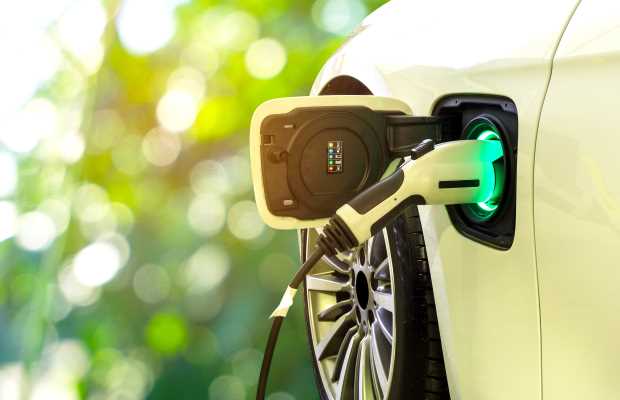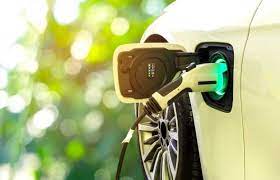..As Nigeria’s Hope Maybe Dashed By Epileptic Power

The share of electric vehicles in global passenger car sales is set to quadruple in 2026 from 4.6% last year and exceed 50% from 2033 onwards,Rystad Energy’s latest energy transition report has said
The market penetration of electric vehicles (EVs) is increasing rapidly as a result of the accelerating energy transition, and demand for batteries is expected to skyrocket going forward for both transportation and grid storage.
Rystad Energy’s latest Energy Transition Report reveals that the share of EVs in global new passenger car sales is set to quadruple in 2026 from 4.6 percent last year and exceed 50 percent from 2033 onwards.
New battery electric vehicle (EV) sales, excluding hybrid vehicles, according to the report,are expected to record consecutive annual growth going forward. In 2021, the authors of the report expect EVs to take up around 6.2 percent of global passenger car sales, with the share climbing to 7.7 percent the following year.
Further projecting that Europe will continue to lead electric vehicle adoption by a wide margin in years to come. Its share of electric vehicle sales is forecast to top 10 percent already in 2021 and 20 percent in 2025. North America and Asia will follow suit, albeit at a slower pace. The Middle East and South America are also projected to see increases further in the future, but the adoption rate of EVs will remain lower than rival continents for some time.
The rise of battery electric vehicle cars will also be the prime driver for battery demand in transportation,adding that the combined new battery demand across all transportation segments is expected to grow 15 percent annually on average between 2020 and 2050, gradually rising from 0.23 terawatt hours (TWh) in 2020 to over 1 TWh already in 2024.
It added that growth will speed up and demand for batteries will exceed 4 TWh in 2030, toping 10 TWh around 2040 and plateauing around 14 TWh in 2050. Passenger cars will be, by far, the best market for new batteries, accounting for about 70 percent of total demand in the long term and for almost all demand till 2025. From that point of time, Rystad Energy expects battery adoption will start increasing in the heavy transport segment, with shipping and aviation only starting a low-level adoption from around 2030 onwards.
“In the shipping sector, the main applications for batteries will be for smaller vessels and auxiliary systems for larger vessels. This could change with major technological breakthroughs, for example within lithium-air batteries. However, this type of breakthrough does not appear to be imminent. Aviation is still at least 10-15 years away from a significant uptick in commercial electric flights,” says Marius Foss, senior vice president and head of global energy systems at Rystad Energy.
With each incremental drop in cost comes an incremental increase in batteries’ total addressable market. Batteries originally entered the power sector as an ancillary service, stabilizing the grid by providing a short burst of electricity, but they have proven to be more than just a back-up. In recent years, grid batteries have begun to disrupt the frequency control markets, eating into the market for peaker plants, and most recently, base load capacity in combination with solar and wind. If battery costs continue to decline at current rates, they will comprise an increasing share of the power market and can, together with cheap renewables, potentially displace a significant portion of the current fossil fuel baseload generation. This development will also provide cheap batteries for other parts of the energy system, including distributed and behind-the-meter batteries in buildings, as well as support the rapid electrification of the transportation sector.
The demand for batteries for grid storage is at the moment negligible but is expected to rise in the future. In 2025 we expect this segment’s demand to reach 0.4 TWh, and then demand will climb quickly to 2.7 TWh in 2030, gradually rising to its plateau of 10 TWh in the mid-2040s.
The report finds that there will be a 15-year lag before these EV batteries end up in storage, but it is natural to assume that a large share of the future grid storage demand can be met with repurposed EV batteries. Combining the two takes us to a future plateau of 20 TWh of new batteries needed across both sectors.
The Federal Government had recently unveiled Nigeria’s first locally assembled electric car, the Hyundai Kona.
The locally assembled electric car was officially unveiled by the Mimister of Industry Trade and Investment Adeniyi Adebayo.
The Electric Vehicle, which was assembled by the Stallion Group Automobile, has been tagged as an innovation that will enable Nigeria and Nigerians to benefit from the gains in renewable and sustainable energy.
Speaking at the unveiling event for the Electric Vehicle, Adebayo said that the Federal Ministry of Industry, Trade, and Investment, in collaboration with the National Automotive Design and Development Council plans for a migration from the use of conventional vehicles (powered by fuel and diesel) to alternative powered vehicles.
He said this is in consideration of environmental degradation caused by global warming.
He said, “Another benefit of this vehicle to the automotive industry is the reduction of queues at filling stations, most especially during times of scarcity. I am sure most of you can relate to that.
“All that will be required is setting up charging stations in our respective homes, at strategic locations like shopping malls, event centers and other social and economic clusters in major cities and subsequently nationwide.
“The National Automotive Design and Development Council is working on this.”
The Minister also said the ministry is working closely with NADDC to review the Auto Policy, which will create an enabling environment for all stakeholders in the Auto Industry.
He commended the NADDC for its efforts in the establishment of the pioneer electric vehicle charging stations in University of Nigeria, Nsukka; University of Lagos and the Usman Danfodiyo University, Sokoto.
“Electric cars, trucks and buses are now being built globally, their advantages in terms of zero emission of greenhouse gases, less components to service and maintain, will make it suitable for a developing economy like Nigeria,” he added.
The NADDC DG said that the Electric Vehicle is part of the Nigerian Automotive Industry Plan to boost local production of vehicles.
He said the technology behind the Electric Vehicle would empower businesses and enhanced the quality of lives of Nigerians.
He said as of 2019, about $1bn had been invested by auto companies in the local production of vehicles with over 400,000 installed capacity.
There are worries that Nigeria’s hope of going far with the electric cars initiative would be dashed by epileptic power supply in the country.
















